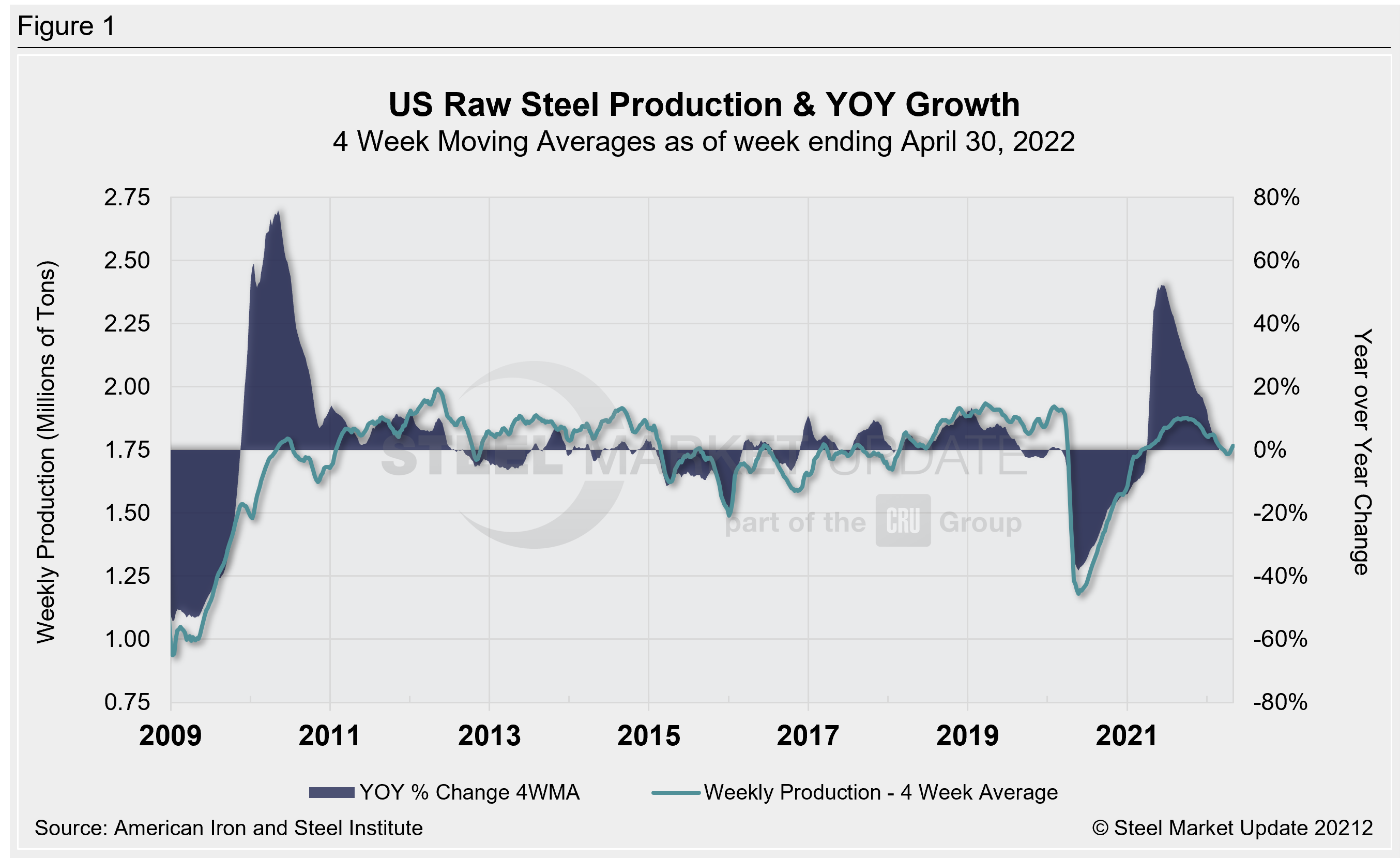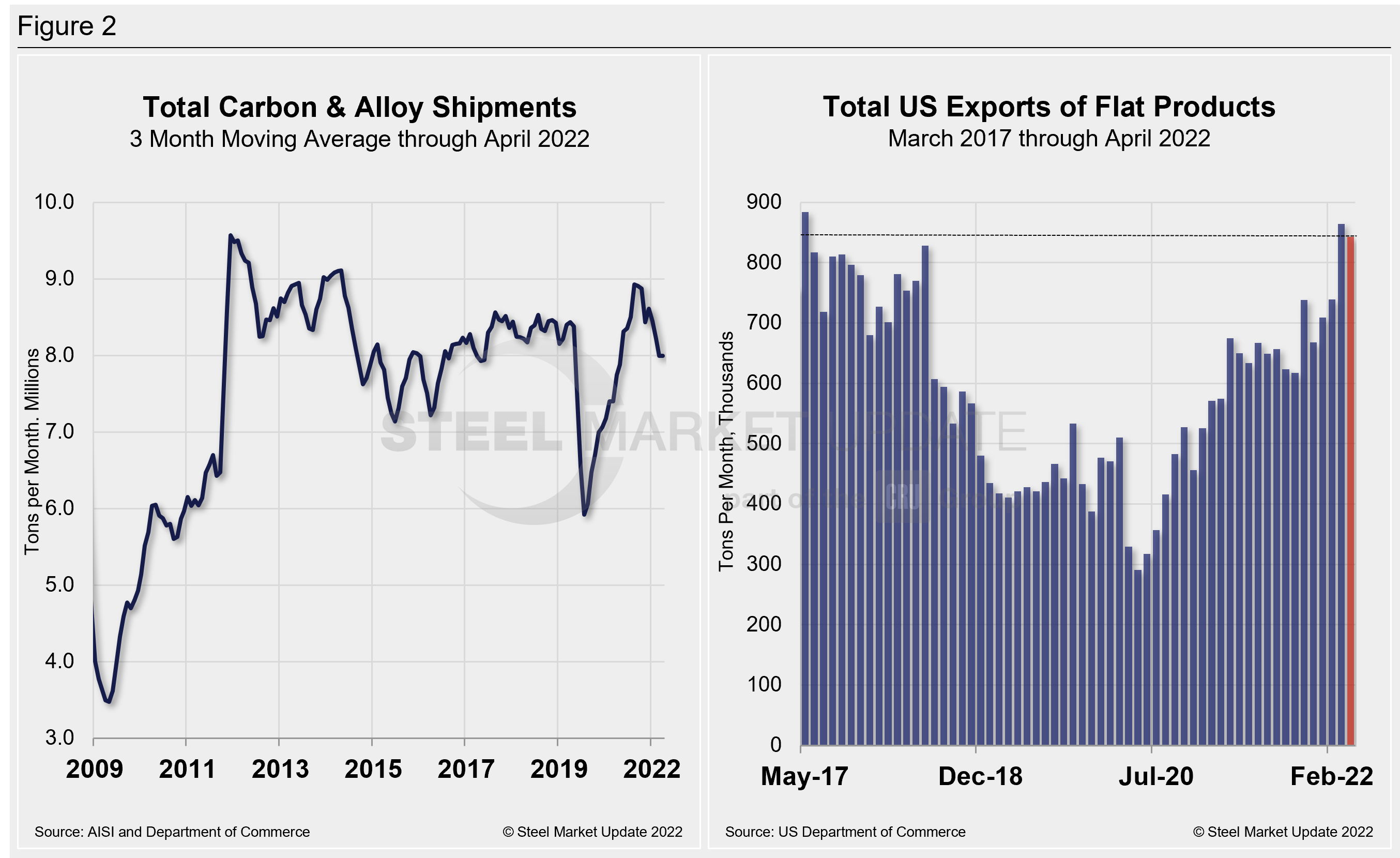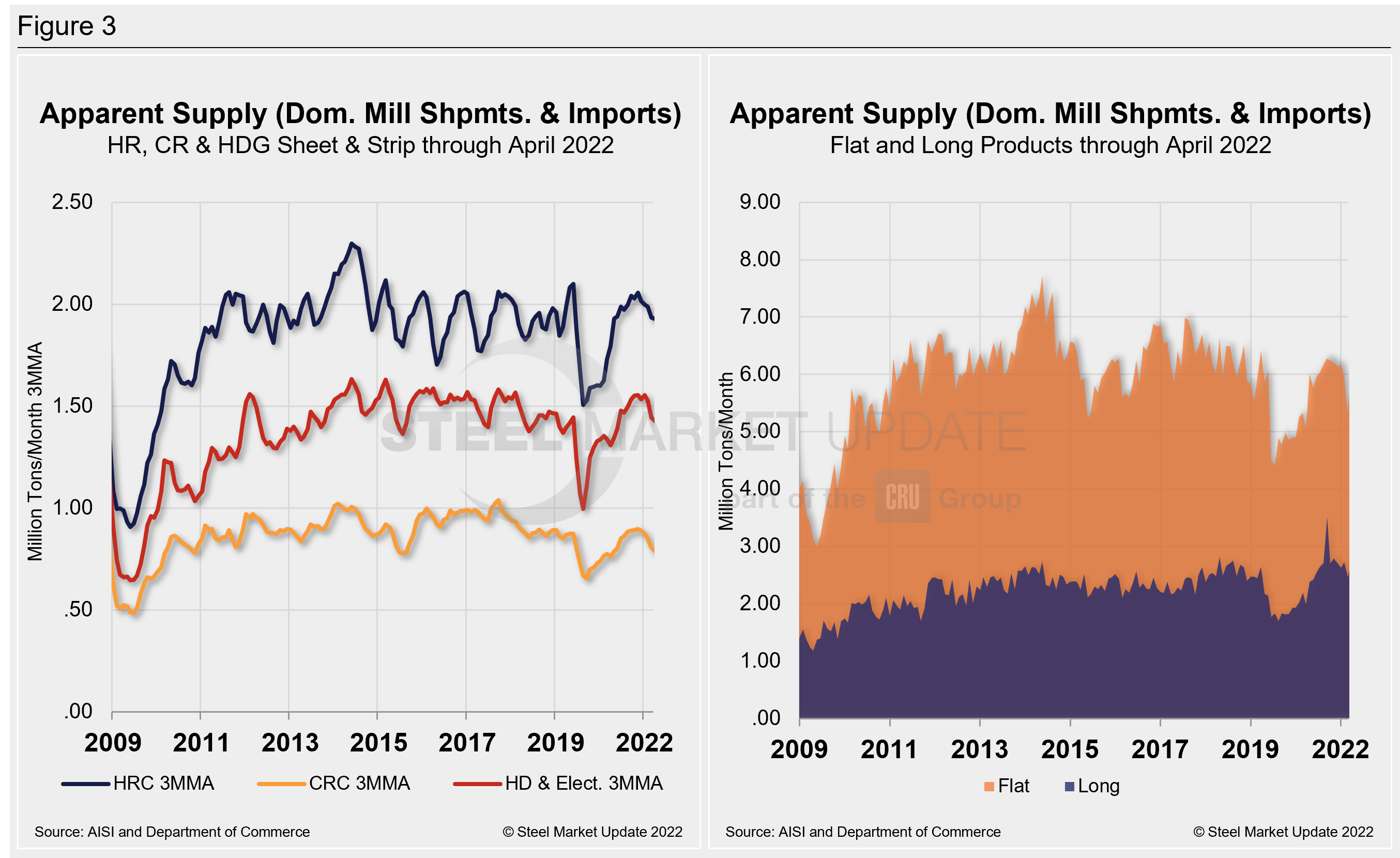Economy

April Shipments and Supply of Steel Products
Written by David Schollaert
June 15, 2022
Total mill shipments of steel products slipped in April following a slight uptick the month prior. April’s mill shipments totaled 8.12 million tons, 2.6% decline from March’s 8.34 million tons. Apparent supply also fell in April, down 4.7% versus the prior month.
This analysis is based on steel mill shipment data from the American Iron and Steel Institute (AISI) and import-export data from the US Department of Commerce (DOC). The analysis summarizes total steel supply by product from 2009 through April 2022 and year-on-year changes.
The supply/demand differential is still in place (supply still topped demand) despite a decline for both supply and demand in April. Apparent supply (domestic shipments plus imports) in April fell by nearly 5% – driven by a 10.3% decline in imports – month-on-month (MoM). Exports also slipped in April, down 2.5% MoM. Though imports slipped MoM, it remains the second-highest total in nearly five years.
Domestic mill utilization averaged 80.6% through April, up roughly 79.8% through March, up roughly 1% versus March’s total amid rising lead times. (Lead times at the time, averaged nearly 5.7 weeks). Though supply still outpaced demand, prices gained momentum as concerns over raw material availability grew due to the war in Ukraine.
SMU’s benchmark hot-rolled coil price rose by more than $400 per net ton ($15 per cwt) in March. HRC prices ended the month at an average of $1,435 per ton FOB mill, east of the Rockies. Prices gained momentum throughout the month after averaging $1,000 per ton – with some inputs well below that level – as of March 1.
The price dynamic reflected uncertainty stemming from the war in Ukraine and the subsequent sanctions against Russian enterprises. Prices reached an inflection point in mid-April, peaking at $1,480 per ton. They have since begun to erode, now averaging $1,100 per ton, according to SMU’s latest check of the market on June 14. Raw steel production, shown below in Figure 1, is based on weekly data from the AISI. It is displayed here as four-week moving averages through April 30, 2022.

Monthly shipment data for all rolled steel products and exports are noted in Figure 2. Measured as a three-month moving average (3MMA) of the monthly data, April’s total was 7.992 million tons, down just 0.1% versus 7.997 million tons in March. April also marked the sixth decline in six months for the 3MMA analysis. Shipments were up just 1.4% in April versus the year prior when shipments were 7.879 million tons. The recovery from Covid-related shutdowns just over two years ago was meaningful. But April’s shipments fell below the same pre-pandemic period in 2019 by 4.8%.
All rolled product exports totaled 842,683 tons in April, down 2.5% MoM but nearly 30% versus the same year-ago period. 2021. Despite the MoM decline, April’s total is the second-highest export mark since May 2017, when the US exported a total of 884,314 tons.

Shipment and supply details for all product groups and individual sheet products are noted in Table 1. Domestic supply (shipments and imports) is shown in Table 2. Total supply (a proxy for market demand) as a 3MMA was up year-on-year (YoY) in April, and slightly ahead of the 4.9% growth see the year prior – when the market was starting to gain ground out from the impact of the early pandemic-related disruptions.
Apparent supply is defined as domestic mill shipments to domestic locations plus imports. Mill shipments were also up but at a slower pace than the 6.7% growth seen during the year-ago period in the same 3MMA comparison. The recovery has varied significantly among various products. But it should remain up due to steady domestic output, especially if foreign material continues to make its way to US ports at current or similar rates.

Total sheet and strip apparent supply is up marginally year to date (Table 2) compared to 2021, but down 8.3% over the past three months, and more than a percentage lower MoM. Total rolled product apparent supply is also up over the same year-ago period but is trending down on a three-month moving average basis. Note that year-over-year comparisons have seasonality removed.

The supply picture for HRC, CRC and HDG since January 2009 as three-month moving averages versus the long-term comparison between flat and long products is shown side-by-side in Figure 3. On the left chart, all three sheet products are displayed. They have experienced some improvement since mid-2020 but are nonetheless trending down of late. When compared to the same pre-pandemic period in 2019, all there are down. Supplies of cold rolled have seen the largest percentage decline (-11.3), followed by hot rolled and galvanized (hot dipped and electrolytic), down 5.7% and 0.1%, respectively, from the same pre-pandemic period in 2019. In the right chart, note that these are monthly numbers (not 3MMAs), which show the trend difference between longs and flat products including plate.

By David Schollaert, David@SteelMarketUpdate.com

David Schollaert
Read more from David SchollaertLatest in Economy

Architecture billings continue to slide in March
Architecture firms said billings continued to decline in March, according to the latest Architecture Billings Index (ABI) released by the American Institute of Architects (AIA) and Deltek.

Beige Book shows concerns about trade policy
Manufacturing was mixed, but two-thirds of districts said activity was little changed or had declined.

New York state manufacturing index drops again in April
Firms were pessimistic, with the future general business conditions index falling to its second lowest reading in the more than 20-year history of the survey

Construction adds 13,000 jobs in March
The construction sector added 13,000 jobs, seasonally adjusted, in March, but tariffs could undermine the industry.

Supply chains, end-users brace for impact from tariffs
Supply chains are working through what the tariffs mean for them
